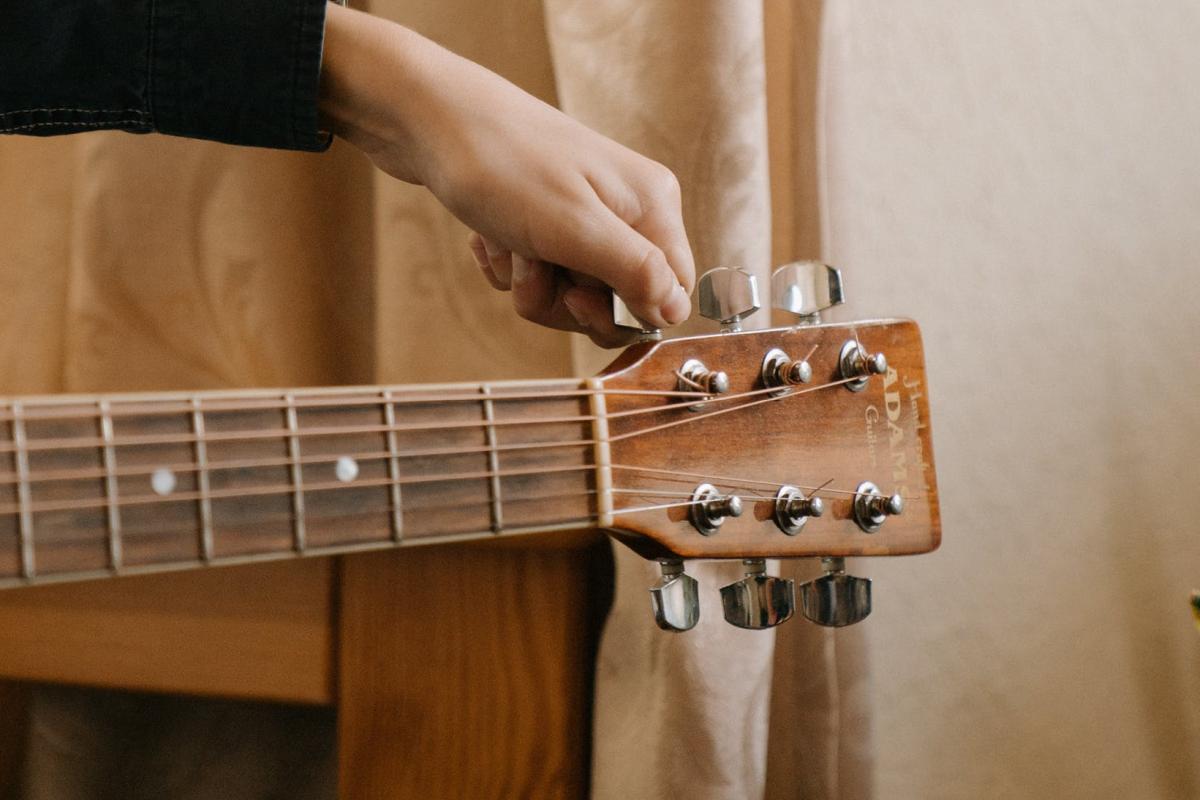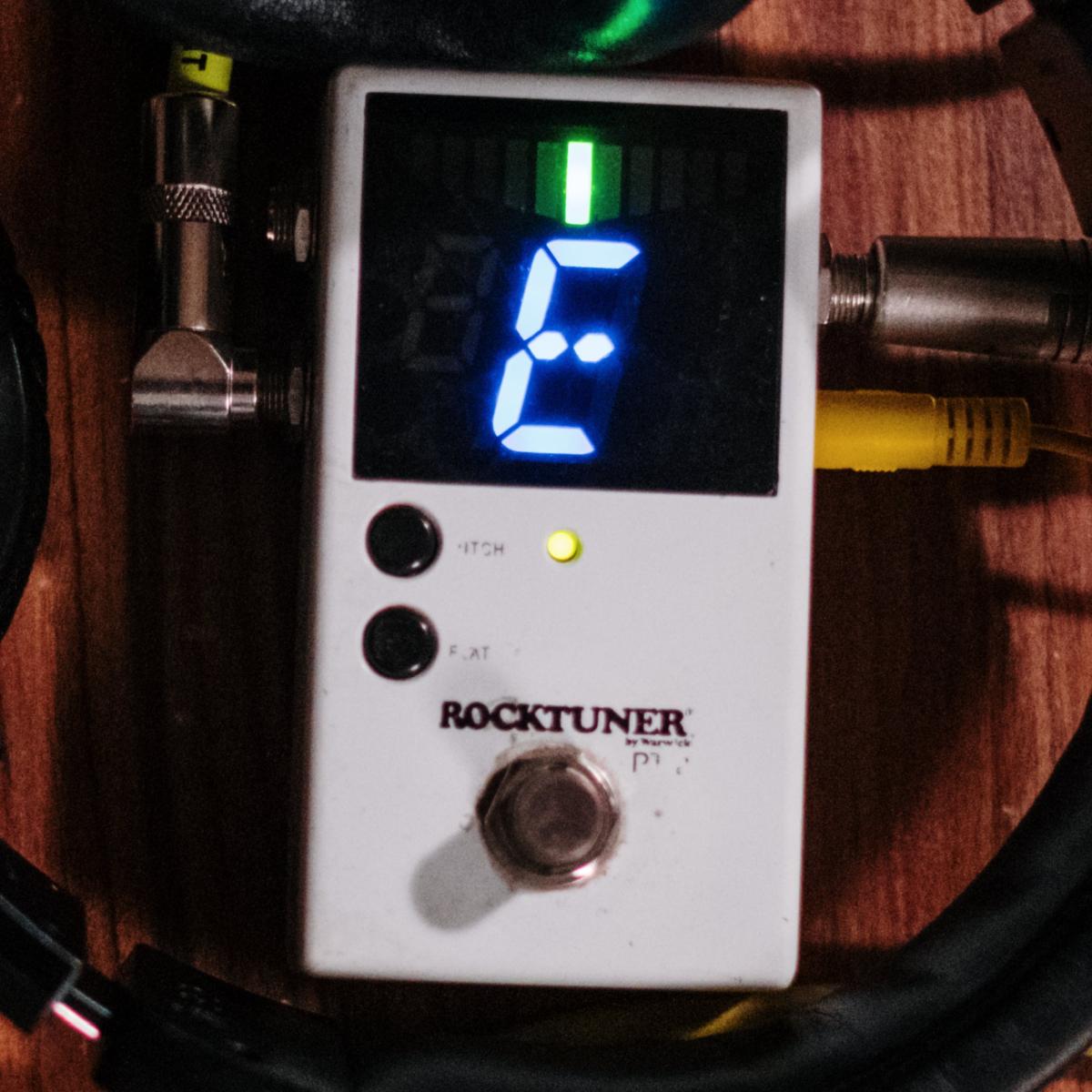Let's discover the exciting world that opens when you change your guitar from standard to an alternate tuning.
As I've delved more into the world of fingerstyle guitar, I've discovered some fascinating alternate tunings.
Some tunings are real game changers, and others are duds that won't really enhance your guitar playing.
I'm excited to share with you my insights into alternate tunings, starting with my pick of the best ones for fingerstyle guitar.
But first, let's look at what alternate tunings are, exactly.
How Do Alternate Tunings Work?
Alternate tunings are any tuning in guitar that differs from the intervals between the strings in standard tuning.
Historically speaking, the guitar has been tuned the same way since around the 15th century. Because guitarists have been tuning their instrument this way for so long, we call this standard tuning.
In standard guitar tuning, the strings are tuned to the following pitches, starting from the thickest string (lowest pitch) to the thinnest string (highest pitch): E, A, D, G, B, and E.
Switching any one of those strings to a different note puts you in an alternate tuning. For example, in Drop D tuning, we drop the lowest string from E to D.

What Is Standard Tuning?
The guitar has historically been tuned to fourths, with a major third interval between two of the middle strings.
A fourth is simply the interval that separates four notes and can be calculated by counting the letters between the notes. For example, A, B, C, D gives us four letters, so the interval between A and D is a fourth.
Stringed instruments that possess only four strings, such as the banjo or the violin, have an interval of a perfect fourth between all of their strings.
However, instruments that have more than six strings, such as the guitar, lute or viol, aren't tuned purely in fourths.
Because we want to play chords, we insert an interval of a third between the higher strings to be able to have two strings that sound the same note.
What Are The Intervals In Standard Tuning?
The intervals, or the distances between the notes of the individual strings, starting from the thickest string (lowest pitch) to the thinnest string (highest pitch), are as follows:
- From E to A: perfect fourth
- From A to D: perfect fourth
- From D to G: perfect fourth
- From G to B: major third
- B to E: perfect fourth
Half-step or whole-step down tunings aren't true alternate tunings, because the guitar can be brought up to standard tuning simply by using a capo.
Why Use Alternate Tunings for Guitar?
With alternate tunings, you can:
- Use open strings more often
- Play different or unusual chord shapes
- Play harmonics that aren't present in standard tunings
Open Tunings
The most simple and beautiful alternate tunings are open tunings. This occurs when you strum all the open strings and you get a chord.
Open tunings are great for playing chords and changing the timbre of the guitar. In fact, blues guitarists would use objects such as bottles or knives instead of using their fingers on the fretboard.
New Chord Shapes
When we tune our guitars in other alternate tunings, we can play new chords, often by fretting one or two notes.
In other words, chord shapes, like cowboy chords, won’t work in your alternate tuning. If you play a standard chord, it will sound totally off in your alternate tuning.
On the other hand, other really cool and awesome sounding chord shapes will emerge in your alternate tuning. Thankfully, these chords can often be easier to play.
However it will be impossible for us to use the same fingering to play the notes on our guitar in an alternate tuning for our song composed for standard tuning.
This means that there can be an extra learning curve when it comes to mastering a song that's in an alternate tuning.
Harmonics
In standard tuning, strumming across the strings while touching the node at the 12th fret will produce a neat effect, but not a recognizeable chord.
Switch to an open tuning, however and suddenly the same action results in a major chord. Not only that, you can use percussive harmonics to great advantage, like Sungha Jung does in his song On Cloud Nine.
Best Alternate Tunings for Guitar
In my opinion, here are some good alternate tunings for fingerstyle guitar:
- Drop D tuning (D-A-D-G-B-E)
- DADGAD tuning (D-A-D-G-A-D)
- Open G tuning (D-G-D-G-B-D)
- Drop C Open tuning (C-G-D-G-A-D)
- Open E tuning (E-G#-B-E-B-E)
Beautiful Guitar Tunings
DADGAD tuning is a logical tuning to use after mastering Drop D tuning. It is almost, but not quite, an open tuning. There are many beautiful fingerstyle songs you can play using this tuning, especially using the techniques that you learn in Play Fingerstyle Guitar Now!
You can play very easy chords using DADGAD tuning all across the guitar neck. However, playing open strings on the guitar in this tuning doesn't give you a major or minor chord.
How to Tune Your Guitar Into An Alternate Tuning
There are two main ways that you can change your guitar into an alternate tuning:
- Using an app (paid version) or a guitar tuner
- Entirely by ear
For easy alternate tunings where you only have to tune one string, you can tune your guitar by ear. For more complex alternate tunings I recommend using an app.
Method #1: Tuning the Guitar With An App
You can use a freely downloadable app for your smartphone to tune into alternate tunings. Some premium versions of the app have presets with alternate tunings that you can use.
You can also use a guitar tuner that allows chromatic tuning to tune your guitar in an alternate tuning. Decide which pitches you want to use for your alternate tuning, and change one string at a time.

Method #2: Tune By Ear
Most alternate tunings involve changing other strings to match the note of an open string on the guitar. We can therefore use the acoustic phenomenon known as beats to tune by ear.
The method of listening for beats involves playing two strings simultaneously: an open string and the string that we would like to change to the same note as the open string.
Tuning Your Guitar to Drop D by Ear
For example, let's say you want to tune the sixth string down to D.
This means you will change the sixth string from E down to D and simultaneously pluck the fourth string. As you approach the correct note, you will hear a pulsating sound called "beats".
These beats will get slower and finally disappear as you approach the note D on the sixth string.
For more help in learning songs in alternate tunings, check out my playlist on YouTube. And for more tips on playing fingerstyle guitar, sign up to my course Play Fingerstyle Guitar Now!



